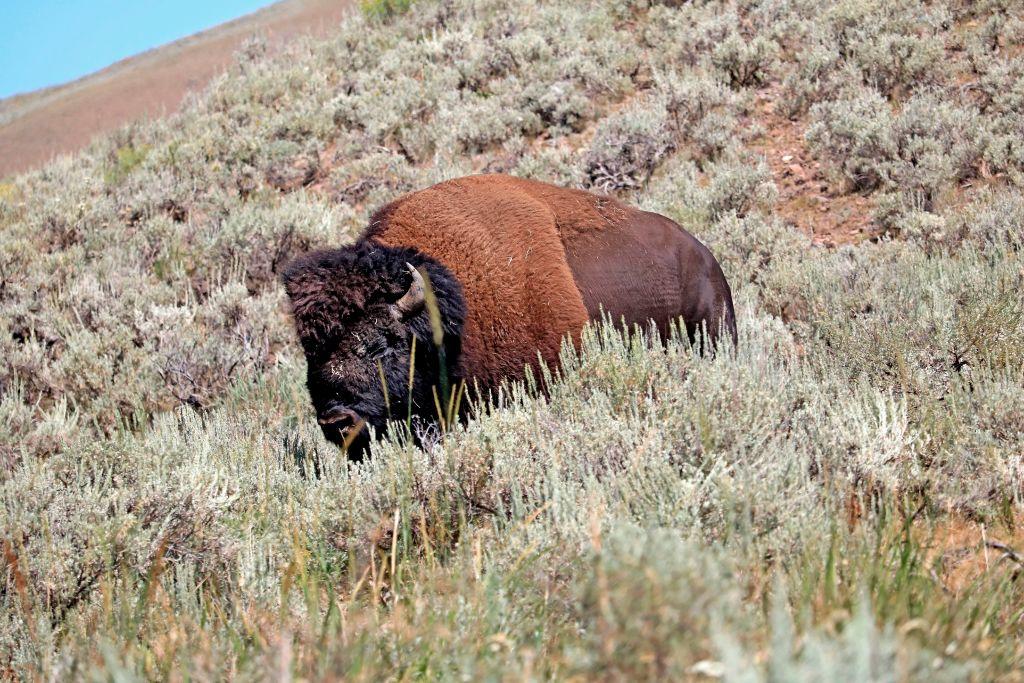An 83-year-old woman was seriously injured after being gored by a bison in Yellowstone National Park. The incident occurred near the Storm Point Trail at the north end of Yellowstone Lake, as the bison was defending its space and lifted the woman about a foot off the ground with its horns. The woman was first treated at a nearby medical clinic before being airlifted to a regional medical center. Yellowstone Park did not provide specific information about her injuries or condition but emphasized that visitors need to keep their distance from wild animals, including staying at least 25 yards away from bison.
Yellowstone National Park has seen a number of incidents involving bison injuring visitors, with the park stating that more people have been injured by bison than any other animal there. In April, an Idaho man was attacked by a bison after allegedly kicking it and was later charged with various offenses. Last year, a 47-year-old woman was gored by a bison, and in 2022, a 25-year-old woman and a 34-year-old man were also gored near Old Faithful within weeks of each other. Bison can be unpredictable and are known to defend their space when threatened, with park officials warning that they can run three times faster than humans.
Bison are the largest mammals in North America, with males weighing up to 2,000 pounds. Their mating season, which occurs from mid-July to mid-August, can make them more agitated and quick to react than at other times of the year. Once on the brink of extinction during the westward expansion in the 19th century, there are now about 420,000 bison in commercial herds and another 20,500 in conservation herds in the U.S. According to the U.S. Fish and Wildlife Service. The park emphasizes the importance of respecting the animals’ space and maintaining a safe distance to prevent such incidents from occurring.
The identities of the individuals involved in the bison attacks were not immediately disclosed, highlighting the need for visitors to exercise caution when encountering wildlife in national parks. Bison, while not aggressive animals, can become defensive and protective of their space, leading to potentially dangerous situations if people get too close. With Yellowstone Park reminding visitors to keep a minimum distance of 25 yards from bison and 100 yards from bears and wolves, it is crucial for everyone to adhere to these guidelines to ensure their safety and prevent any harm to both humans and animals.
The incidents of bison injuries in Yellowstone serve as a reminder of the potential dangers when interacting with wildlife in their natural habitats. Despite bison not being inherently aggressive, they will defend themselves when they feel threatened, making it essential for visitors to exercise caution and respect the animals’ boundaries. With the park experiencing multiple bison-related incidents over the years, it is crucial for visitors to be aware of the risks involved and take necessary precautions to avoid such encounters. By following the guidelines provided by park officials and maintaining a safe distance from wild animals, visitors can enjoy their time in nature while ensuring the well-being of themselves and the animals that call Yellowstone home.
Park officials have issued warnings about the unpredictable nature of bison and their ability to defend their territory when feeling threatened. With a history of visitors being injured by bison, Yellowstone National Park emphasizes the importance of maintaining a safe distance from these animals to prevent potential conflicts. The increasing number of bison-related incidents underscores the need for visitors to be vigilant and respectful of wildlife while exploring the park. By adhering to the guidelines and regulations established by park authorities, visitors can help protect themselves and the animals inhabiting the park, ensuring a safe and enjoyable experience for all.


